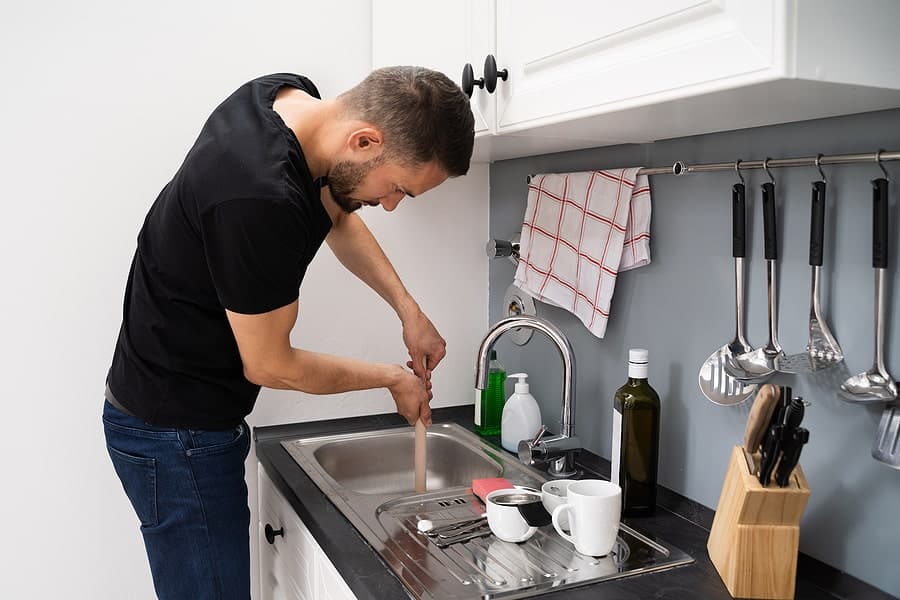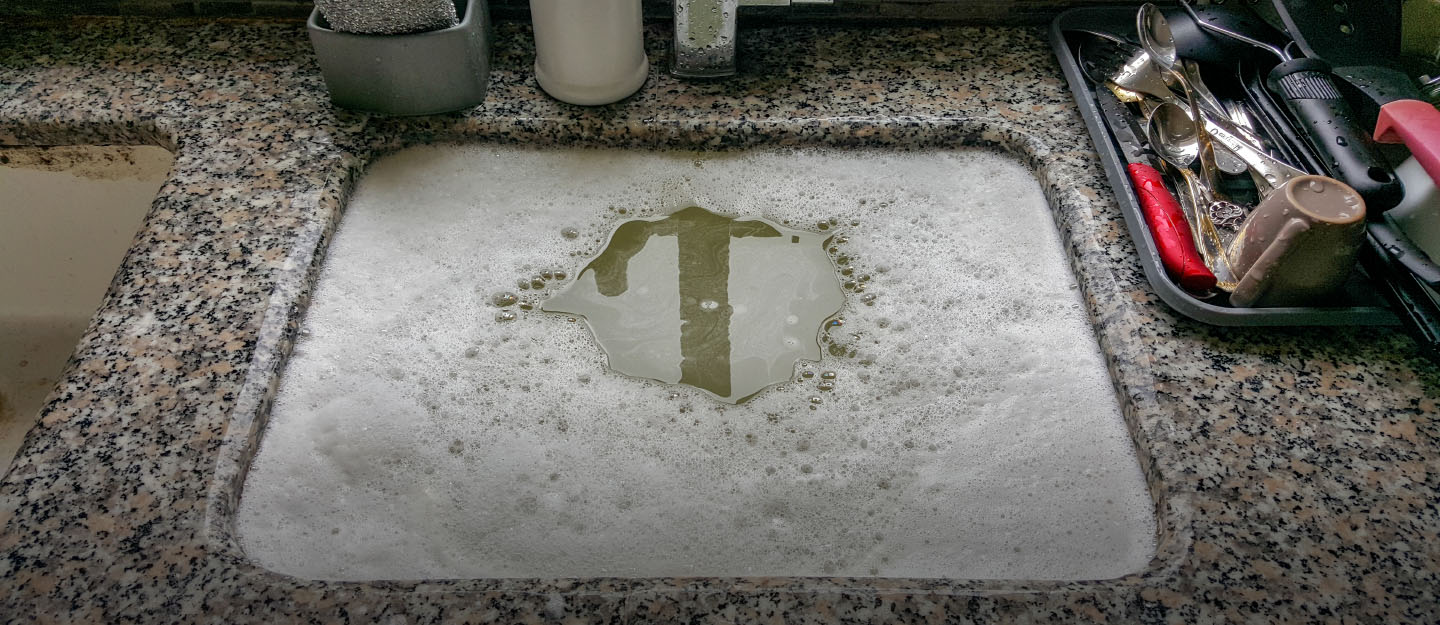5 DIY Secrets on How to Handle a Blocked Kitchen Sink
5 DIY Secrets on How to Handle a Blocked Kitchen Sink
Blog Article
Were you hunting for answers on Fixing Typical Household Plumbing Problems?

Obstructed kitchen sinks are one of the most usual drain concerns house owners face. And also what's more, it's a really uncomfortable as well as undesirable sight. Visualize going to the sink to do your dishes as well as discovering that the drain is clogged and also water can not stream down conveniently.
A lot of stopped up drains are caused by food debris, oil, fat, and also soap bits. They clog the sink and make it hard for water to decrease the drainpipe quickly. While it is appealing to put a call through to the plumbers, there are a few DIY hacks you can try first before making that phone call.
In this write-up, we will be looking at five simple steps you can take to free your kitchen area sink from clogs and also save you from the discomfort and also humiliation of dealing with a clogged up kitchen sink.
1. Usage Boiling Water
When confronted with a stopped up sink, the first thing you should try is to put boiling thin down the drainpipe. That is about one of the most uncomplicated solution to clogged up sinks and water drainages. Boiling water aids counteract the particles as well as debris causing the clog, specifically if it's soap, oil, or grease bits, and also in most cases, it can flush it all down, and your sink will be back to normal.
Because warm water might thaw the lines and create more damage, do not attempt this method if you have plastic pipes (PVC). You might want to stick to making use of a bettor to get particles out if you make use of plastic pipelines.
Utilizing this technique, turn on the tap to see how water moves after pouring warm water away. Try the procedure again if the blockage persists. Nevertheless, the clog could be much more persistent in many cases as well as require more than simply boiling water.
2. Possibly it's the Garbage Disposal
In lots of cases, the blockage may be due to a blockage in the disposal. Use pliers instead.
You can check out the complying with choice to unclog your kitchen sink if this does not work.
3. Try a Plunger
If the trouble is not from the waste disposal unit, you can attempt making use of a bettor. Plungers are standard home devices for this occasion, and also they can can be found in helpful if you use them properly. A flat-bottomed bettor is most ideal for this, however you can make do with what you have is a commode plunger.
Follow the list below basic actions to use the plunger effectively:
Secure the drain with a cloth and also fill the sink with some warm water
Place the bettor in position over the drainpipe and start plunging
Check to see if the water runs easily after a couple of plunges
Repeat the procedure until the drain is free
4. Sodium Bicarbonate as well as Vinegar
In contrast to using any kind of kind of chemicals or bleach, this technique is safer and also not harmful to you or your sink. Sodium bicarbonate and vinegar are day-to-day residence things used for numerous other points, as well as they can do the trick to your kitchen area sink.
Firstly, eliminate any type of water that is left in the sink with a cup.
Then pour a good amount of baking soda down the tubes.
Pour in one mug of vinegar.
Seal the water drainage opening as well as enable it to go for some minutes.
Pour warm water away to disappear other persistent residue and also bits.
Following this basic method can work, and you can have your cooking area sink back. Repeat the procedure as much as you regard essential to free the sink of this debris entirely.
5. Utilize a Hanger
Using a cable cloth hanger or a plumber's serpent if you have one can do the trick. All you need do is straighten the hanger to go down the drainpipe while you carefully choose out the fragments triggering the clog.
Run hot water down the tubes hereafter to see just how effective you were.
Final Words
Attempting these couple of techniques might save you the costs of having a plumber check it. However in a lot of cases, a plumber is what we need. In cases where you find it hard to unclog the sink also after attempting all these approaches, it might be time to leave it to the specialists.
Get in touch with professional plumbing firms to repair your drain issues as well as other various home plumbing requirements.
Clogged kitchen area sinks are one of the most usual drainage concerns house owners deal with. Visualize going to the sink to do your meals and discovering out that the drainpipe is clogged as well as water can not move down conveniently.
They clog the sink and make it hard for water to go down the drainpipe swiftly. When encountered with a clogged sink, the initial point you ought to attempt is to pour boiling water down the drainpipe. Boiling water assists counteract the fragments and particles causing the obstruction, specifically if it's soap, grease, or oil particles, as well as in many cases, it can flush it all down, and also your sink will certainly be back to typical.
How to Unclog a Kitchen Sink
Take the Plunge
Start your efforts by plunging. Use a plunger with a large rubber bell and a sturdy handle. Before getting to work on the drain, clamp the drain line to the dishwasher. If you don t close the line, plunging could force dirty water into the dishwasher.
Fill the sink with several inches of water. This ensures a good seal over the drain.
If you have a double sink, plug the other drain with a wet rag or strainer.
Insert the plunger at an angle, making sure water, not air, fills the bell.
Plunge forcefully several times. Pop off the plunger.
Repeat plunging and popping several times until the water drains.Clean the Trap
The P-trap is the curved pipe under the sink. The trap arm is the straight pipe that attaches to the P-trap and runs to the drain stub-out on the wall. Grease and debris can block this section of pipe. Here s how to unclog a kitchen sink by cleaning out the trap:
Remove as much standing water from the sink as possible.
Place a bucket under the pipe to catch the water as it drains.
Unscrew the slip nuts at both ends of the P-trap. Use slip-joint pliers and work carefully to avoid damaging the pipes or fasteners.
If you find a clog, remove it. Reassemble the trap.
If the P-trap isn t clogged, remove the trap arm and look for clogs there. Run the tip of a screwdriver into the drain stub-out to fetch nearby gunk.Spin the Auger
With the trap disassembled, you re ready to crank the auger down the drain line.
Pull a 12-inch length of cable from the auger and tighten the setscrew.
Insert the auger into the drain line, easing it into the pipe.
Feed the cable into the line until you feel an obstruction. Pull out more cable if you need to.
If you come to a clog, crank and push the cable until you feel it break through. The cable will lose tension when this happens.
Crank counterclockwise to pull out the cable, catching the grime and debris with a rag as the cable retracts.

Hopefully you enjoyed our topic about Fixing Typical Household Plumbing Problems. Thank you for taking a few minutes to browse our blog. Do you know about anybody else who is in to Common Household Plumbing Issues? Why not promote it. I love reading our article about DIY Plumbing Fixes.
Get Started Report this page